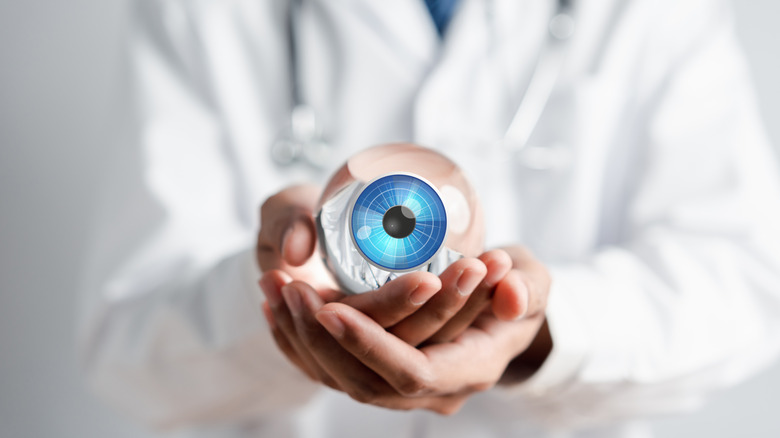Scientists Have Created A Robot Eye With Better Sight Than Humans
The field of soft robotics creates robots made of materials such as elastic, silicone rubber, or gels for the purpose of working in conjunction with people. Extremely maneuverable and often lacking the electronic components that are standard in your metal-constructed traditional robots. Now, a new invention is aiming to enhance the capabilities of the soft robotics field even further with a powerful robotic "eye."
Researchers from the Georgia Institute of Technology created a squishy lens made from hydrogel that doesn't require an external power source to operate. This robotic lens has extremely good vision, able to even see minute details like hair on the leg of an ant. The type of lens this eye uses is brand new, and the researchers refer to it as photoresponsive hydrogel soft lens (PHySL).
Their findings were published in the Science Robotics journal in October 2025 under the title "Bioinspired photoresponsive soft robotic lens." The researchers believe the PHySL is a promising invention for the future. It has utilization possibilities for soft robots that see, adaptive medical tools, and smart wearable devices. Since a study has determined that human eyes aren't as good as we hope because our brain does a lot of the heavy lifting, the applications for this lens could fill in the gaps where human eyesight is unreliable.
The details of this robotic eye
The publication discusses that the challenge of making a soft robotic lens is that human vision depends on flexible, adaptable optical systems. Therefore, it's difficult to create materials that are both high-performing and biocompatible. This new type of material, however, solves part of that problem by using a special hydrogel that reacts to light, allowing it to change focus without needing electricity or mechanical parts.
The PHySL can change its focus based on incoming light. To create this innovation, the research team created a hydrogel ring around a silicon polymer lens. The graphene oxide within the hydrogel absorbs light, allowing it to swell or shrink. As it does so, it can change the shape and focus of the lens to see tiny details with clarity.
The researchers took this technology a step further. They have inserted it into a hydrogel microfluidic system of valves with the purpose of capitalizing on the power of light. Now, the light that the lens already uses can also power an autonomous camera system. This isn't the only sight issue solar-based power is solving, as a solar-powered eye implant is helping people with eye diseases.
The applications for this robotic eye
The soft robotics field could potentially have multiple purposes for a powerful lens like this one. Soft robots already help in the medical field with physical therapy and surgeries. The squishy nature of the lens could make it perfect to work alongside surgeons, using its ultra-detailed vision to help with highly complex procedures. Soft robots that work in search and rescue operations can certainly benefit from better eyesight than humans have to locate survivors.
There are other fields that soft robotics is integrated in that, in theory, this PHySL could enhance. Soft robots already work in farms to help with crops, they work in manufacturing environments assembling products, and they explore ocean depths where it is unsafe for humans to go. Perhaps it could even benefit research in the ocean's hadal trenches to help study how life at the bottom of the ocean survives with the sun.
The researchers also see a laboratory-based purpose for the PHySL. This hydrogel lens could replace traditional microscope lenses. With its extremely powerful focusing abilities, it could see items in detail that are as small as four micrometers. The future looks intriguing for this robotic lens. It will be exciting to see what it gets used for across various fields in the years to come.


